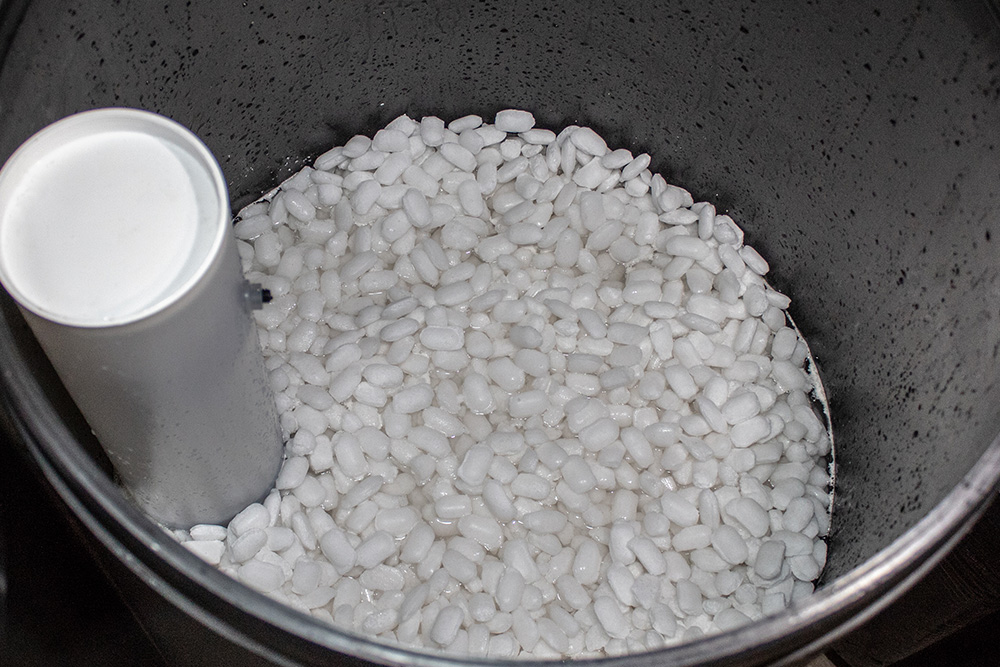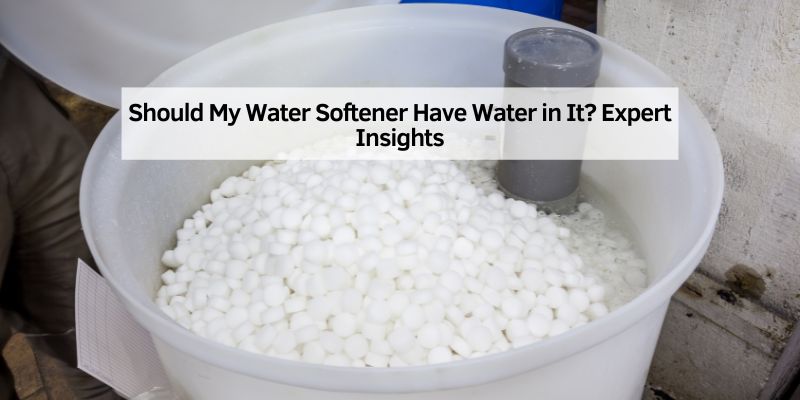Have you ever peeked inside your water softener and wondered, “Should there be water in there?” You’re not alone.
Many homeowners are puzzled by this question, unsure of what’s normal and what’s not. Understanding your water softener is crucial for maintaining the quality of water in your home. It’s not just about having softer water; it’s about ensuring your appliances run smoothly and your pipes remain free from harmful mineral buildup.
If you’re curious about what’s happening inside that mysterious tank and want to make sure everything is functioning correctly, this article is for you. Let’s dive into why water in your water softener matters and what it means for your home. Keep reading to find out more!

Credit: www.water-right.com
Function Of A Water Softener
A water softener makes hard water soft. Hard water has many minerals. These minerals can cause problems. They build up in pipes. They affect appliances. They make soap less bubbly. A water softener changes these minerals. It swaps them with sodium or potassium. This helps the water feel better. It is smoother on the skin. It is kinder to clothes. It makes cleaning easier.
Water softeners have tanks. These tanks hold resin beads. Resin beads do the swapping. They are important for the process. Water flows over the beads. Minerals stick to the beads. Soft water goes to the house. Regeneration cleans the beads. It uses salt water. Salt washes away the minerals. The beads can swap again. This is how the cycle works.
Common Water Softener Issues
Many water softeners may have water inside. This is normal. But sometimes, too much water can cause problems. Overflowing water can make the softener work poorly. It might even stop working. Check your softener often. Make sure there is not too much water.
Some softeners might leak. Leaks can happen if the softener parts wear out. Old seals and parts may cause leaks. Replacing old parts can fix this. Regular maintenance is key.
Softener not working? It might be a clogged valve. Debris can block the flow of water. Cleaning the valve helps. It keeps the softener running smooth. Always keep an eye on these issues.
Water Levels In Water Softeners
A water softener needs water inside. It helps to clean the salt.
Usually, there is water in the brine tank. It covers the salt.
You should see a few inches of water. This is normal.
The water helps make soft water for your home.
If the water level is too low, it won’t work well.
Check the level often. Keep it just right.
Too much water can cause problems. It may overflow.
You might notice water on the floor. This is a bad sign.
Excessive water can mean a valve issue. Or a clog.
Check the system. Fix any broken parts quickly.
Too much water can ruin the salt. It can make softening hard.
Keep an eye on the water level. Make sure it’s balanced.
Causes Of High Water Levels
A clogged drain line can cause water to build up. Dirt and debris often block the line. This prevents water from flowing out. Regular cleaning can help keep the line clear. Use a brush or a soft cloth to wipe it clean. Check it often to avoid problems.
The float valve controls the water level. If it breaks, water may not stop filling. This can lead to high water levels. Check the valve often. Replace it if it doesn’t work well. It’s important to keep it in good shape.
The resin bed helps in water softening. It can become clogged with minerals. This can cause water overflow. Clean the resin bed regularly. This ensures it works properly. Replace it if cleaning does not help.
Troubleshooting Tips
Check the drain line often. Make sure it’s not blocked. A clogged line can cause water overflow. Look for any kinks or bends in the line. Straighten it if needed. Water should flow freely to prevent issues. This simple check can save a lot of trouble.
The float valve controls water levels. Inspect it regularly to ensure it works well. If it sticks, the softener may overflow. Clean the float to remove any dirt. Make sure it moves up and down smoothly. A clean float valve is key for proper operation.
The resin bed is important for softening water. Check it every few months. Clean it to remove any buildup. This helps it work better. A clean resin bed makes water softening more effective. Regular checks can keep your softener running smoothly.

Credit: mrplumberindy.com
Preventive Maintenance
It’s important to keep your water softener clean. This helps it work well. Use a soft brush and mild soap. Clean the tank and parts gently. Rinse everything with clean water. This removes all soap. Regular cleaning helps your water softener last longer. It also keeps your water soft.
A professional can check your water softener. They know how it should work. They can find any problems early. This keeps the water softener in good shape. Hire a professional once a year. They will do a full check-up. This way, your water stays soft and clean.
Expert Advice
Sometimes, water softeners act strangely. They might not work right. Strange noises can come from them. Or water may not be soft. Smelly water is another problem. These signs mean it’s time to ask for help. Professionals know how to fix these issues. They have the right tools. And the right skills. They can make the softener work well again.
Fixing a water softener can cost money. Costs depend on the problem. Small issues cost less. Big repairs cost more. Always ask for a price before the fix starts. This helps you know what to expect. Sometimes, buying a new unit is cheaper. It lasts longer too. Think about the benefits and costs. Decide what’s best for you.

Credit: www.watersmartsystems.com
Frequently Asked Questions
Is There Supposed To Be Standing Water In My Water Softener?
Yes, some water in the brine tank is normal. It’s essential for dissolving salt to regenerate the resin beads. Always check that water levels aren’t excessively high, which could indicate a problem. Regular maintenance ensures optimal performance of your water softener.
How Much Water Should My Water Softener Have In It?
A water softener typically has 1-2 feet of water in the brine tank. Ensure it covers the salt without overflowing. Regularly check the water level to maintain optimal performance. Adjust based on usage and manufacturer’s guidelines.
Should A Water Softener Tank Have Water In It?
Yes, a water softener tank should have water in it. This water is essential for proper functioning, helping to dissolve the salt and regenerate the resin beads. Regular checks ensure optimal performance and prevent potential issues. Always follow the manufacturer’s guidelines for maintenance.
Is It Ok To Have Water At The Bottom Of Water Softener?
Yes, it’s normal for a water softener to have some water at the bottom. This water helps dissolve salt for the regeneration process, ensuring the system functions efficiently. Regular maintenance is essential to keep the water level appropriate and prevent any issues.
Conclusion
A water softener needs some water inside. It’s crucial for its function. Water helps dissolve salt, which softens your water. Always check for the right water level. Too much or too little can cause issues. Regular maintenance ensures efficiency. A well-functioning softener protects appliances.
It also improves water quality. Consider consulting a professional if unsure. They can offer valuable guidance. Understanding your water softener helps prevent future problems. Keep it running smoothly for optimal benefits. Your home deserves the best water quality.

